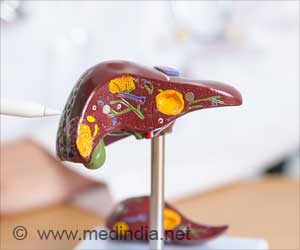Primary liver cancer, medically known as hepatocellular carcinoma (HCC), arises from the hepatocytes, the main cells of the liver. It stands as a substantial global health concern, ranking among the most prevalent forms of liver cancer. In India alone, available data reveals an incidence rate for men ranging from 4 to 7.5 and for women from 1.2 to 2.2 per 100,000 population per year (1). It emphasizes the critical need to grasp the fundamentals of primary liver cancer, recognize its symptoms, and understand associated risk factors for effective disease management and prompt medical intervention.
Symptoms of Primary Liver Cancer
The symptoms of primary liver cancer can manifest in diverse ways, and in its early stages, they may be subtle or absent. As the disease advances, individuals may experience (2):
-
Abdominal Pain:
Persistent discomfort in the upper abdomen may arise as a tumor exerts pressure on surrounding tissues.
-
Jaundice:
Yellowing of the skin and eyes signifies impaired liver function and bilirubin accumulation.
-
Swelling:
Ascites, or fluid buildup, can lead to swelling in the abdomen or legs.
-
Enlarged Liver or Spleen:
Physical examinations may detect an enlarged liver or spleen.
Rapid and unexplained weight loss, reduced appetite, and generalized weakness may also signal liver cancer. Nausea and vomiting may occur as liver function declines.
Risk Factors of Primary Liver Cancer
Understanding the risk factors is crucial for identifying individuals at higher risk who may benefit from regular screening. Key risk factors of hepatocellular carcinoma include (3):
-
Hepatitis B or C Infection:
Chronic viral infections significantly elevate the risk of liver cancer.
-
Cirrhosis:
Scarring of liver tissue, often caused by alcohol abuse, viral hepatitis, or non-alcoholic fatty liver disease (NAFLD), is a major risk factor.
-
Excessive Alcohol Consumption:
Chronic alcohol abuse contributes to cirrhosis and increases the likelihood of malignant transformation.
-
NAFLD:
The accumulation of fat in the liver is associated with an elevated risk of liver cancer, especially in the presence of cirrhosis.
-
Aflatoxins Exposure:
Toxic substances from certain molds on crops like peanuts and corn pose a risk for liver cancer.
-
Diabetes:
Poorly controlled diabetes is linked to an increased risk.
-
Obesity:
Obesity, particularly when associated with conditions like NAFLD and diabetes, raises the risk.
-
Hereditary Conditions:
Certain genetic conditions, such as hemochromatosis and Wilson’s disease, can heighten the risk.
Early Detection and Prevention of Primary Liver Cancer
While these symptoms may also relate to other liver conditions or unrelated health issues, persistent or worsening symptoms warrant a comprehensive medical checkup. Regular monitoring and early detection are crucial for improving treatment outcomes. Lifestyle modifications, vaccination against hepatitis B, and effective management of chronic liver conditions play pivotal roles in reducing the risk of liver cancer.
Vital Role of the Liver
The liver is indispensable for various physiological processes crucial for maintaining overall health. Its functions include detoxification, drug and toxin metabolism, fat breakdown, bile production for digestion, and glucose storage as glycogen for energy regulation. Additionally, the liver synthesizes proteins for blood clotting, produces cholesterol, regulates amino acids, and filters waste products from the blood, contributing to the body’s optimal functioning (4).
In conclusion, primary liver cancer demands attention not only for its prevalence but also for the subtle nature of its symptoms in the early stages. Recognizing risk factors, prioritizing regular health checkups, and adopting a liver-friendly lifestyle are essential steps in mitigating the risks associated with hepatocellular carcinoma. By understanding the intricacies of liver health, individuals can empower themselves to make informed choices for a healthier future.
Advertisement
References:
- Epidemiology of hepatocellular carcinoma in India
Acharya SK. Epidemiology of hepatocellular carcinoma in India. J Clin Exp Hepatol. 2014 Aug;4(Suppl 3):S27-33. doi: 10.1016/j.jceh.2014.05.013. Epub 2014 Jun 20. PMID: 25755607; PMCID: PMC4284206. - Liver Cancer
https:www.ncbi.nlm.nih.gov/books/NBK448337/#:~:text=Patients%20may%20complain%20of%20upper,a%20suspicion%20for%20hepatocellular%20carcinoma. - Chemical Risk Factors of Primary Liver Cancer: An Update
Barsouk A, Thandra KC, Saginala K, Rawla P, Barsouk A. Chemical Risk Factors of Primary Liver Cancer: An Update. Hepat Med. 2021 Jan 5;12:179-188. doi: 10.2147/HMER.S278070. PMID: 33447099; PMCID: PMC7801911. - The LIver
Trefts E, Gannon M, Wasserman DH. The liver. Curr Biol. 2017 Nov 6;27(21):R1147-R1151. doi: 10.1016/j.cub.2017.09.019. PMID: 29112863; PMCID: PMC5897118.
Source: Medindia



